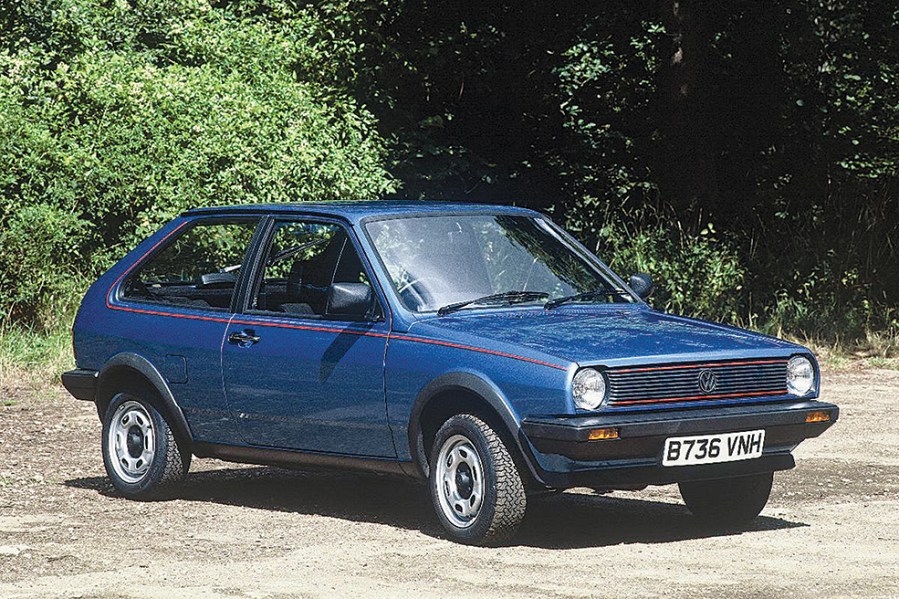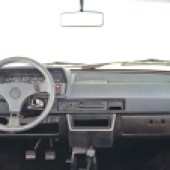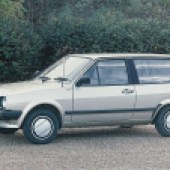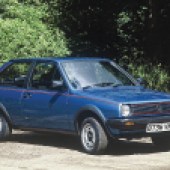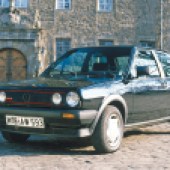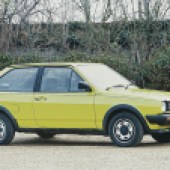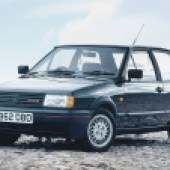Tired of the complexity and nannying of modern cars but don’t want to go back to carburettors, condensers and chrome? The Volkswagen Polo Mk2 could be just the ticket
The Mk2 Polo was launched in late 1981 and arrived in the UK a year later. In familiar Volkswagen fashion, the new car was really just a modest evolution of its predecessor – the major dimensions were all the same apart from a slightly wider track.
The EA111 engine remained, featuring an iron block, an alloy head, a single overhead cam and a Pierburg carburettor, although the inadequate 895cc version of the original Polo had been upped to 1043cc and 45bhp. This was fitted to the basic Polo C model, while the CL and GL models had the unchanged 1093cc/50bhp engine – the slight difference in capacity and power really just accounting for the greater weight of the better-equipped models.
All engines had four-speed manual gearboxes. The running gear was still sturdily conventional, with MacPherson struts at the front and a torsion beam rear axle, unassisted rack and pinion steering and front disc/rear drum brakes. On left-hand drive cars a brake servo was standard on all models but RHD cars could not accommodate it and thus poor braking performance was the one constant criticism of the Polo in the UK.
Even the styling was simply a nip and tuck of what had come before, except at the back, where real change was afoot. As launched,, the new Polo was available only as a baby three-door estate with a vertical rear window; the model quickly became known as the ‘Breadvan’. Elsewhere the new Polo’s interior had received a significant update in the name of better refinement and quality, although not much was added in the way of equipment.
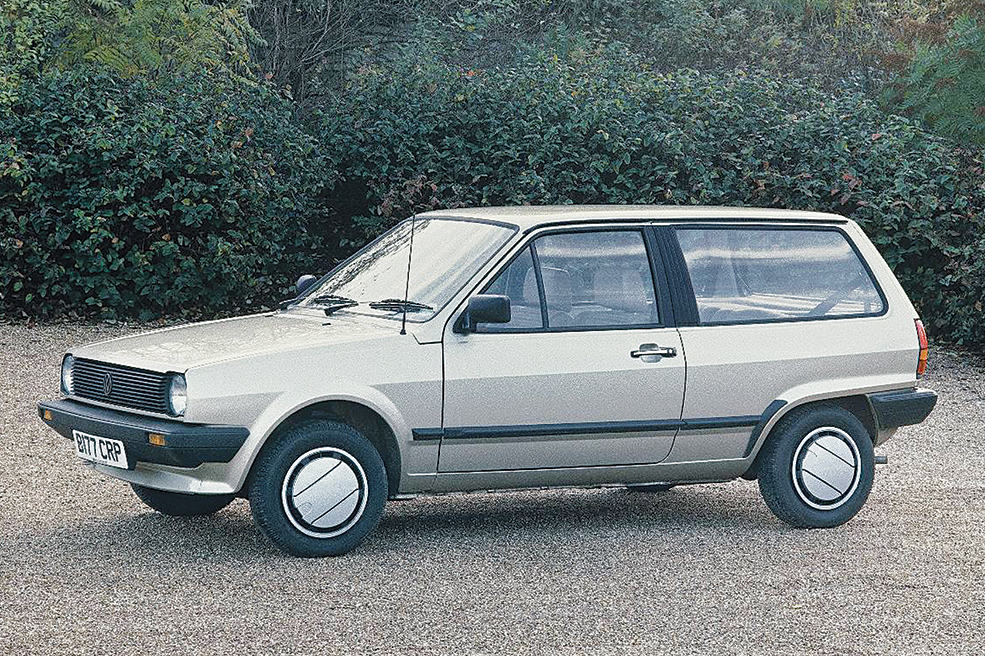
Reducing noise and harshness had been one of the main things Volkswagen looked to do on the Mk2, as well as taking major steps to improve rust resistance. From the start the Polo earned a reputation as a reliable little car and it would prove to be very long-lived – many Mk2 Polos reached 10 or 15 years of age without a blemish.
In 1983 the range was expanded with the addition of the Polo Classic – a two-door booted saloon with square headlamps which replaced the previous Derby saloon derivative. A few months later came the return of the more traditional slant-back three-door hatch, looking very similar to the Mk1 Polo but now branded the Polo Coupe while the Breadvan became known, on an official basis, as the Polo Hatchback. At launch it was available as a single model with the 1093cc engine and various bits of Golf GTI-inspired garnish such as wheel arch extensions, a rear spoiler, a rev counter, lower-profile tyres and striped seat cloth.
From 1984 the Polo specification began to improve. The 1093cc engine was dropped and replaced by a 1.3-litre unit with 55bhp. An ultra-basic Polo Hatchback model, with no trim designator, was introduced. The next year saw the Polo Classic renamed the Polo Saloon and from here on it used the same round headlamps as the other models. At the same time an ordinary Coupe model was introduced for those wanting a conventional hatchback without the sporting edge and this was to the same 1.1-litre spec as the Polo C.
The 1.3-engined Coupe model was renamed the Polo Coupe S and gained sporty bucket seats, driving lamps in the grille, a three-spoke steering wheel and a digital clock.
Bigger changes came for 1986 when the 1.0 and 1.3-litre engines were modernised, gaining automatic chokes, five-bearing camshafts, hydraulic tappets and electronic ignition which all greatly improved their useability and reduced their maintenance needs. This year saw VW mark the production of the two millionth Polo. To celebrate, VW introduced the Ranger edition of the Hatchback, complete with alloy wheels and driving lamps.
This became a permanent fixture in the range and the most expensive Polo hatchback you could buy. From this time onwards there was a string of Polo special editions.
Most were essentially low-spec models but with a few useful extras such as a radio/cassette, sunroof and front driving lamps, usually plus the addition of some garish seat material and body graphics.
In 1987 the Coupe S became the first Polo to receive a five-speed gearbox (labelled 4+E) and from 1988 mid-range models in the other bodies gained this as an option. The next year saw the arrival of the Fox name for the ultra-basic Polo Hatchback.
The Mk2 Polo received a heavy facelift in September 1990. Known internally as the Polo 2F, the revised range was badged and sold as the Polo Catalyst, reflecting the standard fitment of a catalytic converter and fuel injection. For the first time RHD Polos had a brake servo, finally bringing stopping power up to scratch. These cars sported a new look inside and out with flush-fit rectangular headlamps, restyled and bigger plastic bumpers and updated rear lamps and detailing to give them the appearance of a shrunken Mk2 Golf. Meanwhile the dashboard was completely revamped to resemble that of the new Mk3 Passat, looking much less old-fashioned than the previous design, while new full-height door trims meant there was no longer any metalwork visible in the cabin.
Three trim levels were offered on the new range: Fox, CL or GT. The Saloon was only available in CL trim and very few were sold. The Hatchback and the Coupe were available in all three specs and were, for the first time, priced the same regardless of shape.
While the majority of the original Polo Mk2s sold had been Hatchbacks, the Mk2F saw favour swing to the Coupe as buyers spurned the rather old-fashioned and utilitarian ‘Breadvan’. Fox-spec cars were available only with the 1.1-litre engine, now making 45bhp in fuel-injected form. CL buyers had the choice of either 1.1 or the 55bhp 1.3-litre unit while GTs had a 75bhp 1.3-litre power unit. In a similar trend to the engines, Fox cars only had a four-speed gearbox, CL buyers had a choice of four- or five-speed units and GT cars were only fitted with the five-speed. The engines were praised for their smoothness, tractability and economy but, even in GT guise, they were not especially fun to use and the Polo remained a rather staid, sensible sort of car with perfectly tidy handling but little sense of fun.
That changed in 1991 with the creation of the first truly sporting Polo, the G40. This was a GT-spec Polo Coupe with the addition of VW’s distinctive G-Lader twin-scroll supercharger, taking power up to 113bhp – good for 60mph in 8.6 seconds and a top speed of 120mph. The G40 also had 65 per cent stiffer front springs, suspension lowered by 25mm all round, a stiffer front anti-roll bar and a unique rear anti-roll bar plus uprated bushes and balljoints in the steering.
The Polo G40 was warmly received, with many considering that it recaptured something of the spirit of the original Mk1 Golf GTI – an opinion which hardened over the next few months when the Mk3 Golf was released..
Despite this shot in the arm, there was no denying the age of the Polo – a 10-year old car which was itself based on a model launched in 1974. While still holding trump cards for its reliability and build quality, the Polo was increasingly seen as low-tech, unrefined and old-fashioned in its styling and driving experience at a time when there were plenty of well-sorted, modern superminis to choose from. Production ended in August 1994.

Bodywork
The Polo’s reputation for rust-resistance is well deserved but we’re now dealing with cars at least 25 years old and rust can be an issue. Check the peripheral areas first, such as the sills (in particular the jacking points), door bottoms and front valance. The petrol tank is steel, as is the filler neck and the latter especially is prone to being perforated with age so look for signs of fuel leaks in this area.
Also look around the windscreen for signs of rust bubbling up around a perished seal, which can then cause damp smells, condensation and nasty rust on the bulkhead and footwells. The same goes for the window seals but these are less serious and easier to replace. Check the floors, preferably from underneath or by lifting the carpet. The exhaust hangers are also prone to rusting away, which causes MoT failures.
More serious rust spots are the suspension mountings – the inner wings around the upper mounts of the MacPherson struts and the attachment points for the rear torsion beam. While in the engine bay look for corrosion around the battery tray.
Aside from these areas, look at the corners and ends for signs of ‘bump’ damage from urban shunts or misjudged parking manoeuvres, as breaks in the paint will encourage more rust, and the door latches for signs of previous break-in attempts (or repaired break-in successes!).
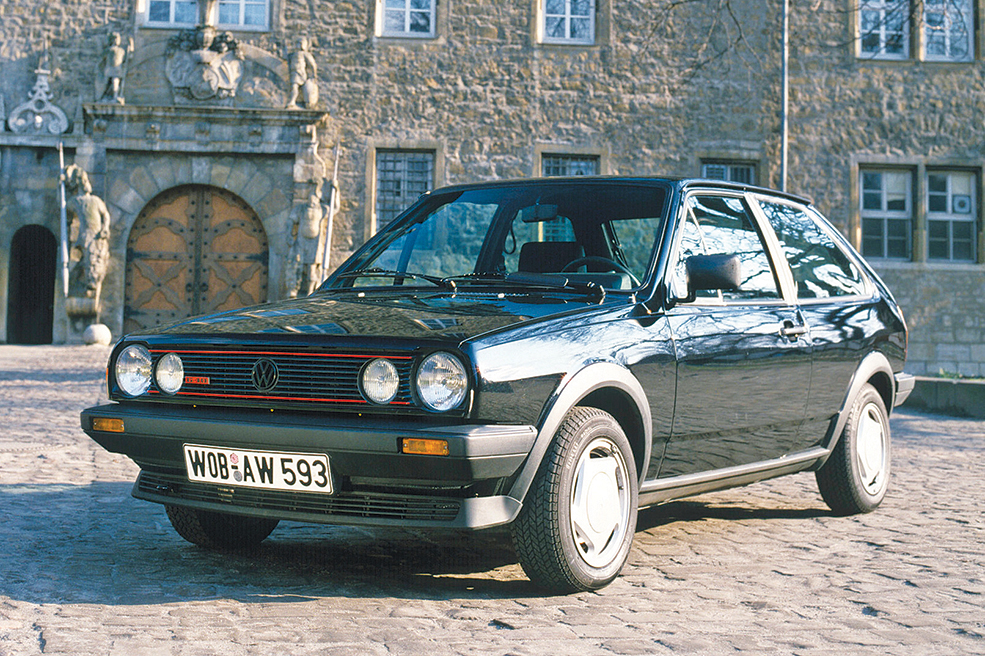
Engine and transmission
The engines have no real inherent weaknesses but are often let down by a deadly mixture of under-use and lack of maintenance. The cam belt should be changed every four years or 40,000 miles. The oil needs changing every 6000 miles or six months with good-quality semi-synthetic oil, especially on the later cars with hydraulic tappets. The engines should run smoothly and with very little mechanical noise but become rattily if the tappets have seized or clogged up.
Check the cleanliness and level of the coolant (which should be changed every two years and with a good strong mixture of anti-corrosive/anti-freeze), the condition of the radiator (many will have slow leaks at the edges and/or large sections of missing finning) and for any signs of water leaks from the pump.
Listen for rumbling or squealing noises from the water pump in the timing belt case – if the pump seizes it usually shreds or snaps the timing belt as well. Let the car idle to see that the cooling fan kicks in at the correct point. The engine should idle smoothly and start easily cold or hot (to start a cold car press the throttle pedal to the floor once then release it to engage the choke). If the engine has an uneven idle, flat spots, runs on or has difficulty starting when warm then the carburettor almost certainly needs a rebuild. This is not too expensive.
Inspect the air filter casing for signs of oil collecting here, which means that the engine is either tired or has been damaged by overheating. In either case it is not worth pursuing. On G40s check the intake hoses for coatings of oil from a worn supercharger – rebuilds need doing every 40,000 miles or so and cost around £500 per time.
The transmission seems to be the weak spot with elderly Polos. Even in-period they had a tendency to leak oil and this gets more acute as they age and the seals shrink. This means that the gearboxes often run dry, but the level is hard to check on a forecourt or a seller’s driveway. Best to assume that you’ll be stopping to buy a litre of 75W/90 gear oil on the way home if you buy! Listen for whining sounds from protesting bearings and gears that are reluctant to engage, especially under heavy loads. Synchromesh tends to last well but high-mileage or mistreated cars can have problems. For now there are plenty of spare gearboxes available.
Another weakness is the clutch. The friction elements themselves give little trouble, although you do find plenty of Polos from elderly owners whose clutch technique is somewhat lacking, but the operating mechanism from the pedal to the release bearing can wear and seize and this is difficult and expensive to replace. Check the clutch operates smoothly without graunching or twanging noises and without stiff spots.
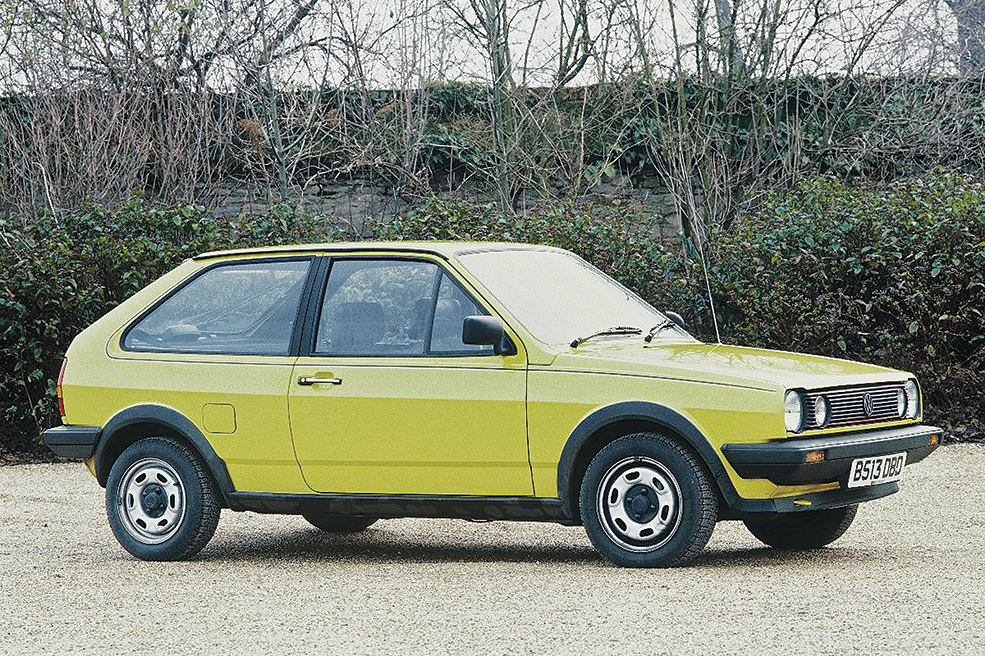
Suspension, steering and brakes
The brakes on the original Mk2 Polo were infamously under-specced due to the lack of a servo. While ultimate stopping power is fine for a light car, low-powered car the brakes need a good deal of pedal pressure to do their job and have to be in tip-top condition to prevent anxious moments. The actual system is both conventional and reliable and needs only checking for leaky cylinders, sticking calipers, perished flexible hoses and worn pads. For some reason Mk2 Polos get through front discs at a particularly rapid rate so check these for scoring, wear and rust.
There’s not much to the rest of the running gear beyond the usual checks for the performance of the dampers, the state of the wheel bearings and for signs of slop and play in the steering linkages and bushes.
The front strut top mounts are known for being noisy and ill-informed Mot testers can often fail the car on excessive movement which is in fact part of the design.

Interior and trim
There is little to a Polo’s interior and it is all very durable and unlikely to go wrong. Check that any of the soft trim such as seat covers, is in good condition as finding replacements or repairing tired seats is too expensive for what the cars are worth. Check for signs and smells of leaks from perished door and screen seals and that the windows wind up and down smoothly as the regulators can seize, bend or break.
Turn on the heater blower and listen to see if the fan makes rattling or screeching noises. If it does (or it doesn’t work at all) the motor and fan needs replacing which is a complicated dash-out job. Also look for signs of a leaking heater matrix such as condensation/anti-freeze deposits on the screen and damp footwells.
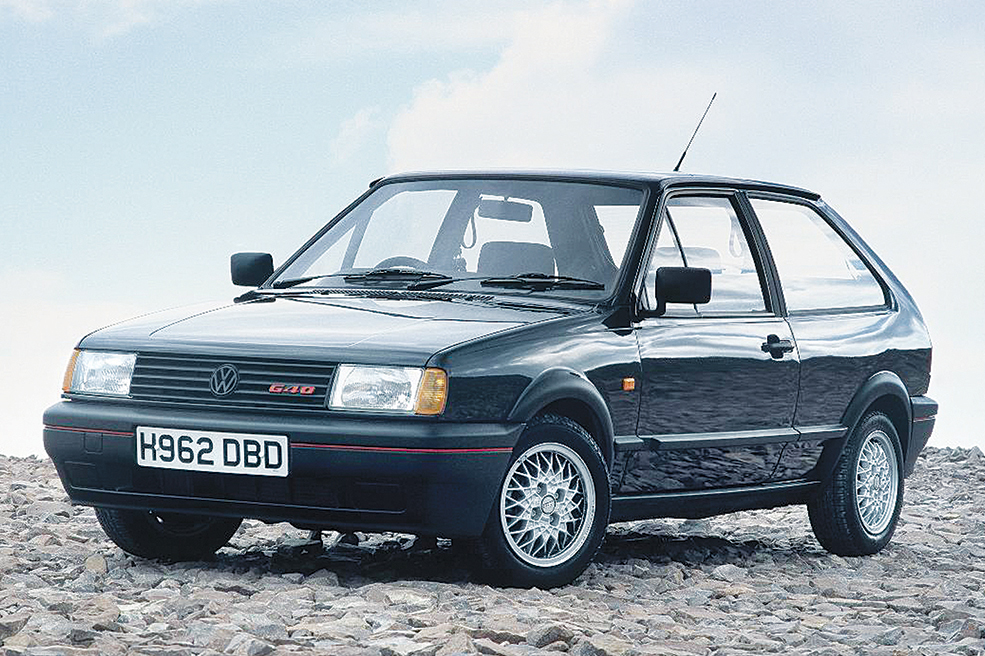
Volskwagen Polo Mk2: our verdict
Never really an exciting or interesting car, the baby Volkswagen was one of Europe’s bestselling cars in the 1980s and put up a strong showing here in the UK. It lacked the glamour and street-cred of its bigger brother the Golf, but found favour as simple, dependable, economical, well-made, inoffensive compact transport.
It had some of the lowest warranty rates and highest resale values of any of the supermini class of its time and many were still trundling around in regular use a decade or more after production ended in 1994.
Many of these once-common cars have since met their end, adding genuine interest and a “don’t see many of these any more, do you?” factor to a well-maintained example, as well as representing a seemingly bygone era of motoring when windows were wound, wing mirrors were singular, radios were optional, and tyre sidewall and tread width measurements were the same.

